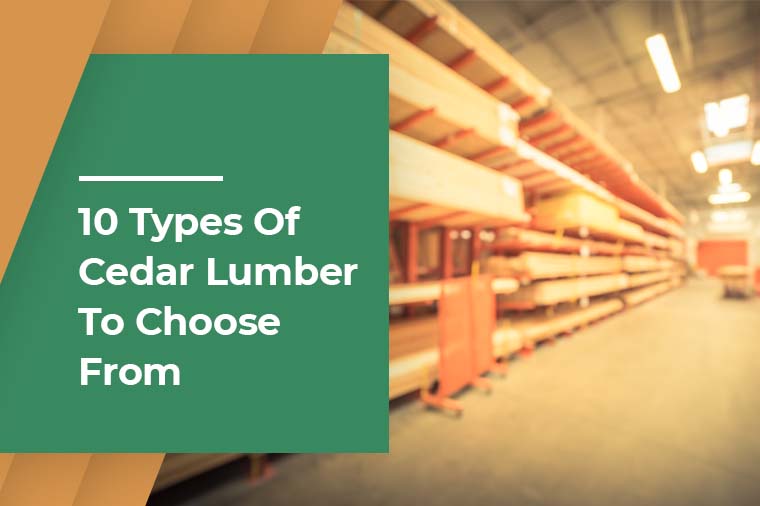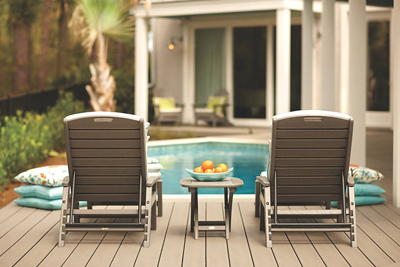10 Types Of Cedar Lumber To Choose From

To All Our Valued Customers, Over the past few years, the Covid 19 Pandemic has forced us to adapt and change the way we do things on a day-to-day basis. Florida Lumber is no exception. To make sure that we remain strong and competitive in the market for the years to come, Florida Lumber has had to adjust and change our vision for the future. In the last 2 years, we have stopped selling Sheetrock and drywall products, roofing felt and roofing materials, and have even closed on Saturdays.
Over the last few months, we have been transitioning our way out of the door supply business so on August 31, 2022, our door shop will stop assembling doors. We will continue liquidating our doors from inventory until we are out of material.
Some customers have asked if we are closing or even moving locations. To set the story straight, we are not closing or selling the business and we are not moving. These changes are all part of our new vision and path to continue serving South Florida and increasing our footprint in the construction supply industry.
Our focus is going to be on Lumber, Construction Materials, Rebar Fabrication and Rebar Accessories. As we have liquidated some of the items that we don’t sell anymore we have created more space to buy a larger volume of our core items and pass on the savings to our customers.
In the next year you will start seeing changes that will help improve our ability to serve you, our customers. We appreciate your business and your patience as Florida Lumber’s new vision becomes reality.
A Todos Nuestros Valiosos Clientes En los ultimos anos, la pandemia de el Virus (Covid 19) nos ha forzado a adaptarnos y cambiar la forma de hacer cosas en el dia a dia. Florida Lumber no ha sido una excepcion.
Para asegurarnos de mantenernos fuertes y competitivos en el mercado en los anos venideros, Florida Lumber ha tenido que ajustar y cambiar nuestra vision para el futuro. En los dos ultimos anos hemos dejado de vender los productos de yeso (sheetrock), paneles de yeso (drywall), tela asfaltica (roofing felt), materiales de techo y cerramos los Sabados. En los ultimos meses, hemos estado en transicion para salir del negocio de suministro de puertas, en Agosto 31, del 2022 nuestra tienda de puertas dejara de construir y/o cortar puertas. Vamos a continuar liquidando nuestro inventario de puertas haste que terminemos todo el material. Algunos de nuestros clientes han preguntado si estamos cerrando o si nos estamos moviendo a otra localidad. La verdad es que no estamos cerrando, no estamos vendiendo y no estamos cambiando de localidad. Estos cambios son todos parte de nuestra nueva vision y camino a continuar sirviendo al estado sur de la Florida y incrementar nuestras huellas en la industria de suministros de construccion.
paneles de yeso (drywall), tela asfaltica (roofing felt), materiales de techo y cerramos los Sabados.
En los ultimos meses, hemos estado en transicion para salir del negocio de suministro de puertas, en Agosto 31, del 2022 nuestra tienda de puertas dejara de construir y/o cortar puertas.
Vamos a continuar liquidando nuestro inventario de puertas haste que terminemos todo el material. Algunos de nuestros clientes han preguntado si estamos cerrando o si nos estamos moviendo a otra localidad.
La verdad es que no estamos cerrando, no estamos vendiendo y no estamos cambiando de localidad. Estos cambios son todos parte de nuestra nueva vision y camino a continuar sirviendo al estado sur de la Florida y incrementar nuestras huellas en la industria de suministros de construcción.
2431 N.W. 20TH ST.
MIAMI, FL 33142
PHONE: (305) 635-6412
Sales Fax: (305) 633-4054
Accounting Fax: (305) 635-3723
Email: sales@tloridalumber.com

Cedarwood is one of the most popular woods for manufacturing high-quality home furnishings all around the world. Cedar lumber has a pleasant aroma, offers an impressive look to furniture, and is naturally insect-repellent.
It is used for adverse weather and even outdoor applications because of its resilience.
There are over 15 cedar species that are present in the cedar families. They are fairly similar in appearance but differ in color, hardness, and rot protection. Also, its uses are different because of their varied characteristics.
It's mostly utilized for railing, flooring, paneling, trim, and a variety of other things. To know more about its types uses, and benefits, keep reading!
What exactly is cedarwood?
Cedarwood is a kind of wood that comes from a variety of trees described as "cedars" that are grown in various parts of the world and have a variety of applications and objectives.
Cedar trees are evergreens, meaning they have needle-like leaves that range in color from vivid green to dramatic blue-green.
These trees can reach heights of up to 100 feet, and sometimes even more. Their brownish seed cones take nearly a year to mature, and when they do, they eventually split and scatter their seeds into the atmosphere.
Cedar is a long-lasting wood that can survive for decades and is used a lot in making furniture.
10 Different Types of Cedar Lumber
Eastern Red Cedar Lumber
The cypress family also includes this tree Eastern red cedar. It can be found growing throughout the eastern United States, reaching heights of 20 to 40 feet in most cases, while some trees can reach 100 feet or more.
Because of its strong essential oils, most people call this wood "scented cedar" and use it to keep insects out of wardrobes and cabinets.
It works well with both hand and power tools, but if you get a rash or experience breathing difficulties, wear a respirator and gloves as well.
The wood of Eastern red cedar lumber is pinkish-red, with a purple undertone and dark reddish stripes. The sapwood is practically white, and its knots can be found all over the wood.
Pro-Tip: To get the finest finishing results, use polyurethane or lacquer.
Deodar Cedar
The deodar cedar is an evergreen tree that is known all over the world for its weeping characteristics. The name deodar comes from the Sanskrit word "devadaru," which means "wood of the gods."
Deodar trees are popular as specimen trees in large parks and gardens because they add to the attractiveness of these spaces.
It features long conifer needles and is available in two colors: dark bluish-green and grey.
The development of this non-flowering shrub necessitates ample sun and moist, sandy soil. The tree can reach a height of 40 to 50 feet and a width of 20 to 30 feet.
Atlas Cedar
The Atlas cedar lumber is a high evergreen tree with a trunk circumference of 5 to 6 feet and a height of 40 to 60 feet.
It enjoys humid, well-drained soil and can withstand dry spells and storms.
Please remember that pests such as borers, sapsuckers, and weevils can harm these trees, so you'll need to apply efficient insecticides to get rid of them.
This species requires extra attention and should be fertilized with formulas that promote sturdy growth.
When the tree is young, trim it to keep it from shedding large snowfalls in the winter. Keep in mind that these plants usually thrive in extensive areas.
Additional Read:
TOP 6 DECKING MATERIALS TO DESIGN YOUR DECK
Western Red Cedar Lumber
We often use Western red cedar for flooring, paneling, roofing, and outdoor buildings because of its properties such as natural decay resilience, capability to resist moisture, and abundance.
It's easy to split and shape with hand or power tools because of its low density and compact size.
This species' heartwood has a persistent reddish-brown color, sometimes tinted with pink. Throughout lumber preparation, the majority of its thin white sapwood with minimal decay resistance is chopped away.
Western red cedar items have been produced for a wide range of uses because of their distinct characteristics.
Spanish Cedar
Spanish cedar is a native of Central and South America that has been transplanted to Florida.
The hue of Spanish cedar lumber ranges from pale pink to reddish-brown, and it darkens with maturity. Spanish Cedar is pretty easy to work with both hand and manufacturing applications, however, sanding is often required for a smooth finish.
It's used in veneers, plywood, carpentry, flamenco traditional guitars, and boatbuilding.
Spanish cedar has become the material of preference for covering cigar humidors due to its pleasant oils and moist resilience.
Northern White Cedar
Northern White cedar, often referred to as the Tree of Life, is native to southeastern Canada and the northeast of the United States.
Northern white cedar is resistant to rot and pest infestation, so it's ideal for outdoor tasks like roofing, posts, and deck. Wood is also used in the construction of canoes.
Northern red cedar is less thick than western red cedar, making it easier to work with machine and hand tools. Without keen cutters and backer planks, the wood is fragile and rips out. Some woodworkers have also reported rashes and breathing issues.
Cyprus Cedar Lumber
As its name suggests, this cedar shrub is indigenous to Cyprus, specifically from the American mountain peaks.
It can achieve heights of up to 30-55 feet in its natural environment, but as an ornamental plant, it is more likely to hit a maximum altitude of 50 feet. It is adaptable to a variety of soil types, so long as they are well-draining.
This cedar tree is hydrated only once in a while, yet it can endure dry soil for short durations.
The leaves of the Cyprian Cedar are tiny and rounded. It is simple to use hand and machine tools for this type of cedar. You can even use this for making veneer panels, cabinets, and construction materials.
Alaska Cedar
Alaska cedar, often known as yellow cedar, is a common tree in the Pacific Northwest. The wood obtained from this species is extremely dense and durable. Its characteristic yellow-colored wood has tight rings, showing that it grew moderately.
While most of this cedar is yellow, we can also see it in a creamy white tone with strong, darker stripes.
Most architects use yellow cedar to make exceptionally lightweight and sturdy decks, handrails, canoe paddles, and interior paneling.
Because of its exceptional sound quality, Alaska cedarwood is also very famous among musical instrument manufacturers.
Lebanon Cedar lumber
This cedar plant is indigenous to the hilly parts of the East Mediterranean, particularly Lebanon, and serves as the country's emblem.
This Lebanon cedar lumber is popular in countries with harsh winters since it is the greatest cold tolerant of all the trees.
It's a slow-growing shrub that takes a long time to attain its full height.
The sapwood of this species is a pale yellow to white in color, and the heartwood is pale reddish-brown. It has a long lifespan and is also insect-resistant. It's a fantastic option for external projects.
Port Oxford Cedar Lumber
This port oxford cedar lumber is pale yellowish-brown to yellow-brown in color. Its shade darkens considerably more when exposed to sunshine.
It's simple to work with, keeps paint well, stains adhesives, and provides an excellent finish.
This cedar is used to make arrow shafts, musical equipment, boatbuilding, boxes, and chests. Furthermore, it is most appropriate for interior application.
Wrapping up!
Here is a round-up for 10 different types of cedar lumber you should be aware of!
Cedar is appreciated for its attractiveness, flexibility, and aromatic scent. This gorgeous wood belongs to the softwood category and is well known around the world.
Each wood has advantages and disadvantages, so choose wisely. And if cedar is appropriate for your dream project, then what kind of cedar is best for your project?
These are some of the most important points to consider and I hope this blog will help you in choosing the right fit.
Visit Florida Lumber to find a plethora of choices of Lumber, Plywood, building materials, and much more.

